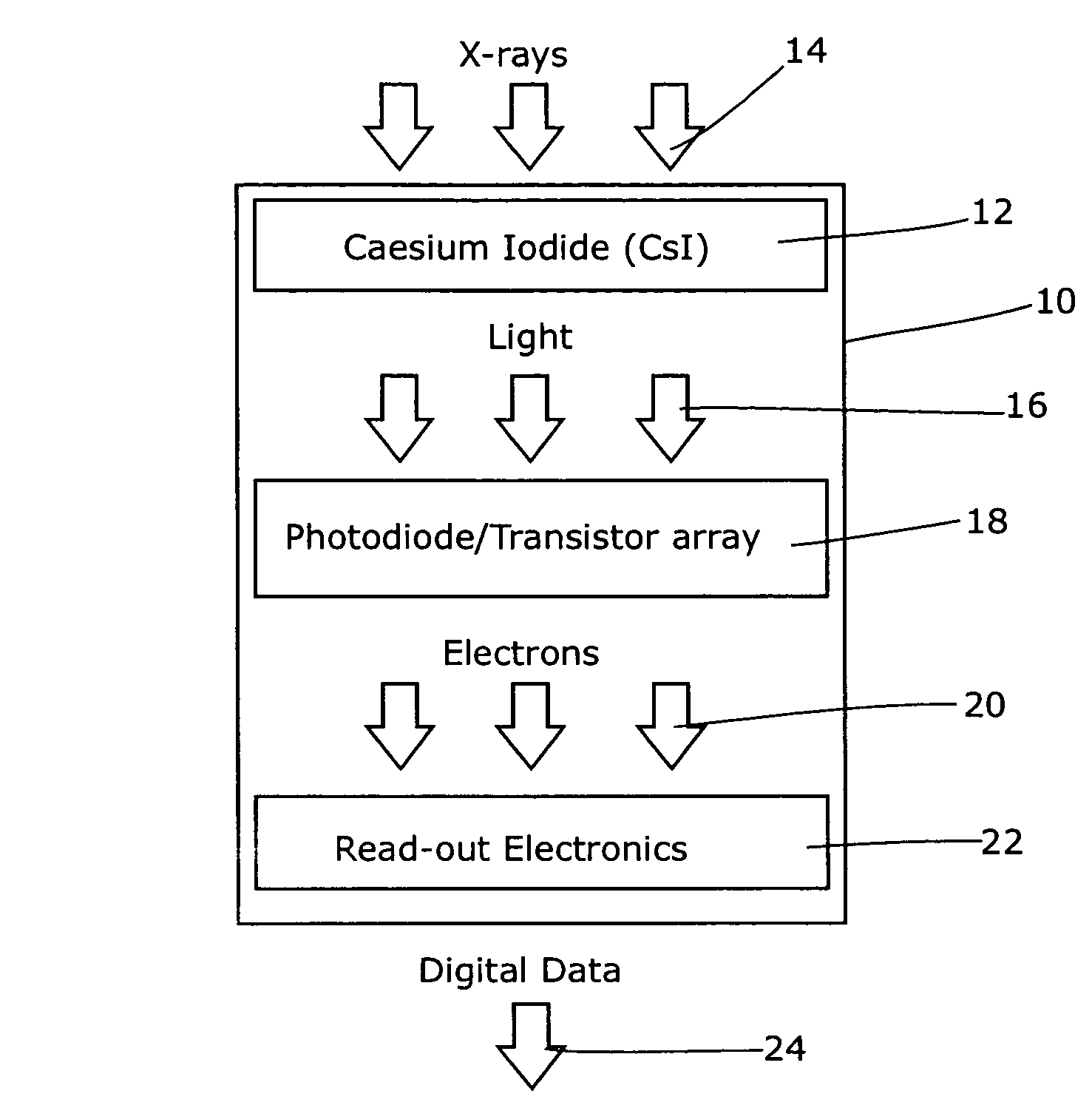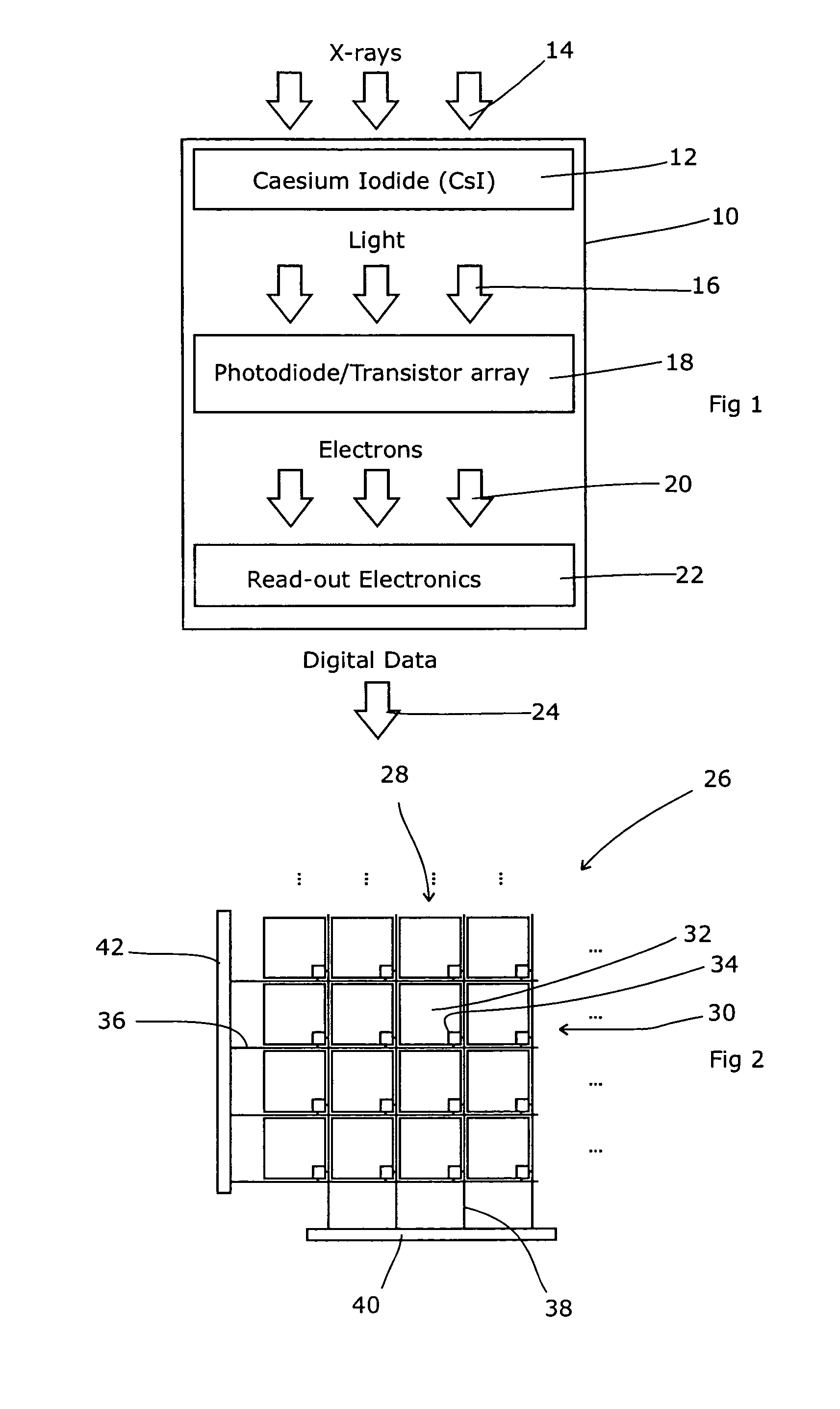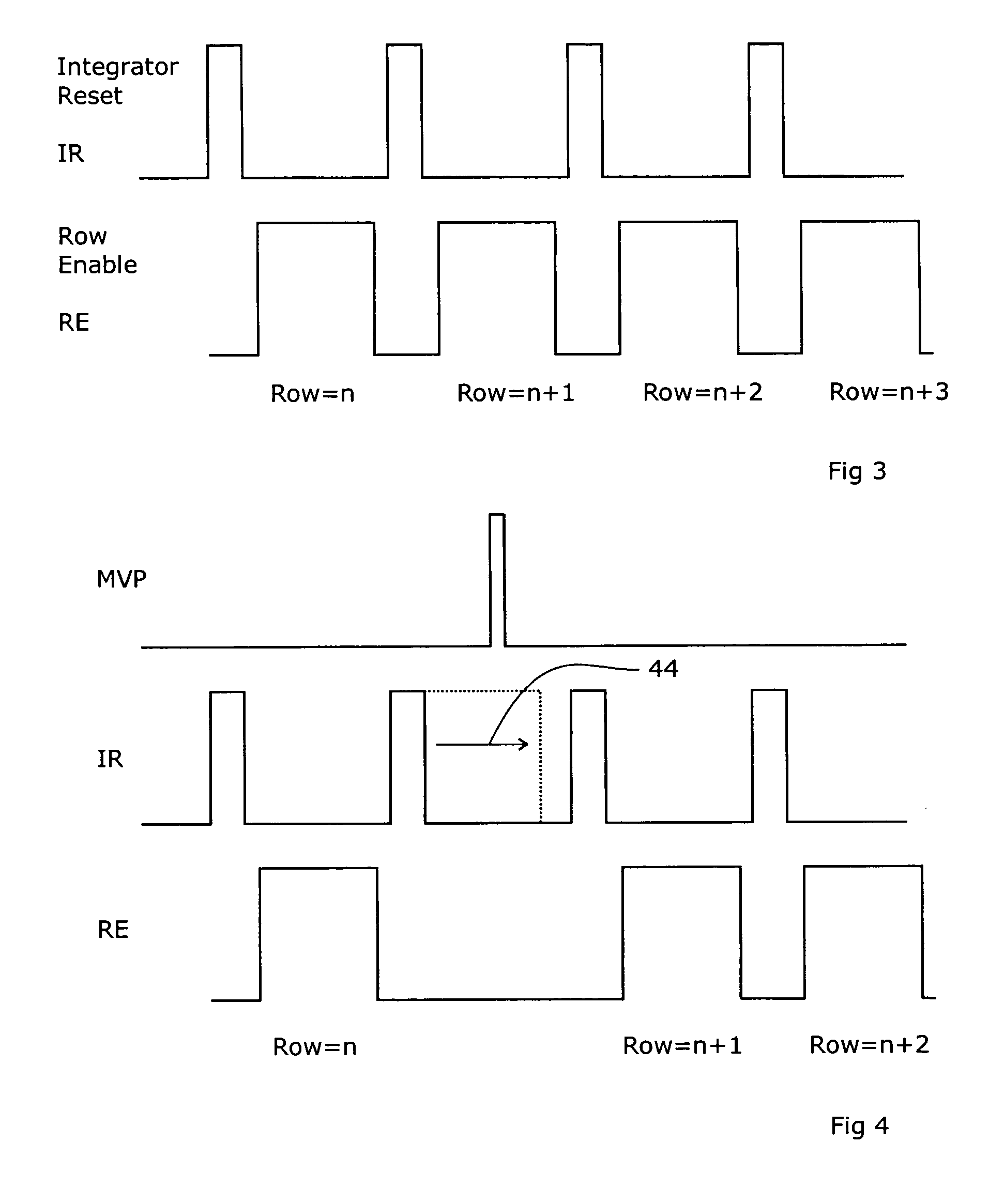Imaging systems for ionising radiation
a technology of ionising radiation and imaging system, which is applied in radiation therapy, x-ray/gamma-ray/particle irradiation therapy, medical science, etc., can solve the problems of ionising the material of which they are formed, scintillation in the scintillator, and portal images suffering from artefacts,
- Summary
- Abstract
- Description
- Claims
- Application Information
AI Technical Summary
Benefits of technology
Problems solved by technology
Method used
Image
Examples
Embodiment Construction
[0027]FIGS. 1 and 2 show an essentially standard imaging panel. FIG. 1 has been described already and shows the vertical cross-section through a single pixel. FIG. 2 shows sixteen pixels of the panel, a small portion of the entire panel but sufficient to explain the manner in which multiple pixels are read.
[0028]Referring to FIG. 2, therefore, the pixel array 26 is arranged in a rectilinear manner with the pixels in straight rows and columns. The intersection of a particular row 28 with a particular column 30 therefore defines a specific pixel 32. Each pixel has an associated transistor 34 to gate its output, and each row has a common “enable” line 36 which activates the transistor 34 of every pixel in that row.
[0029]Each column has a common output line 38 which allows the charge that has accumulated on each pixel to escape to an integrator 40 where it is multiplexed with the output of other columns. This allows the entire row to be read at the same time.
[0030]Scanning control elect...
PUM
 Login to View More
Login to View More Abstract
Description
Claims
Application Information
 Login to View More
Login to View More - R&D
- Intellectual Property
- Life Sciences
- Materials
- Tech Scout
- Unparalleled Data Quality
- Higher Quality Content
- 60% Fewer Hallucinations
Browse by: Latest US Patents, China's latest patents, Technical Efficacy Thesaurus, Application Domain, Technology Topic, Popular Technical Reports.
© 2025 PatSnap. All rights reserved.Legal|Privacy policy|Modern Slavery Act Transparency Statement|Sitemap|About US| Contact US: help@patsnap.com



